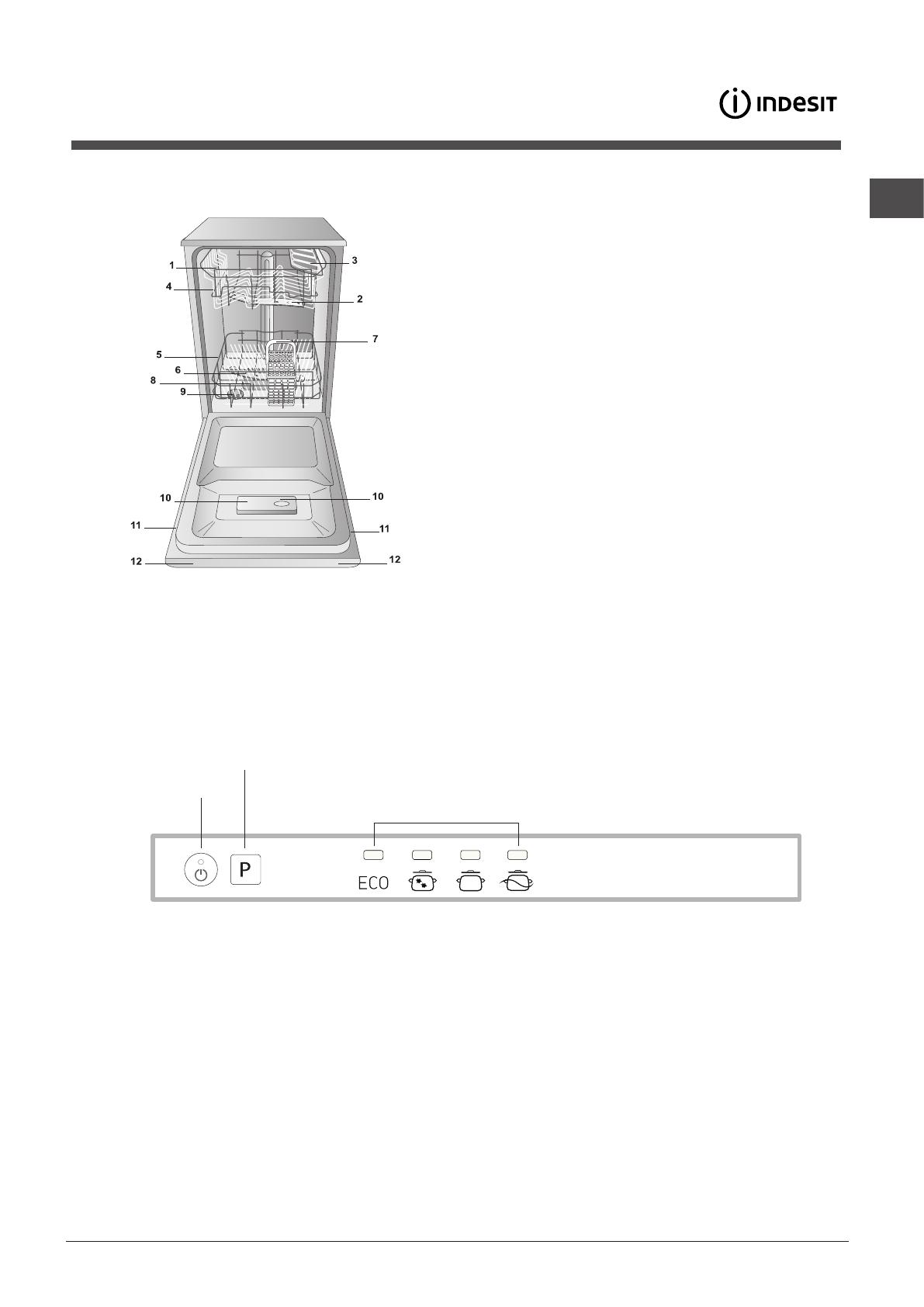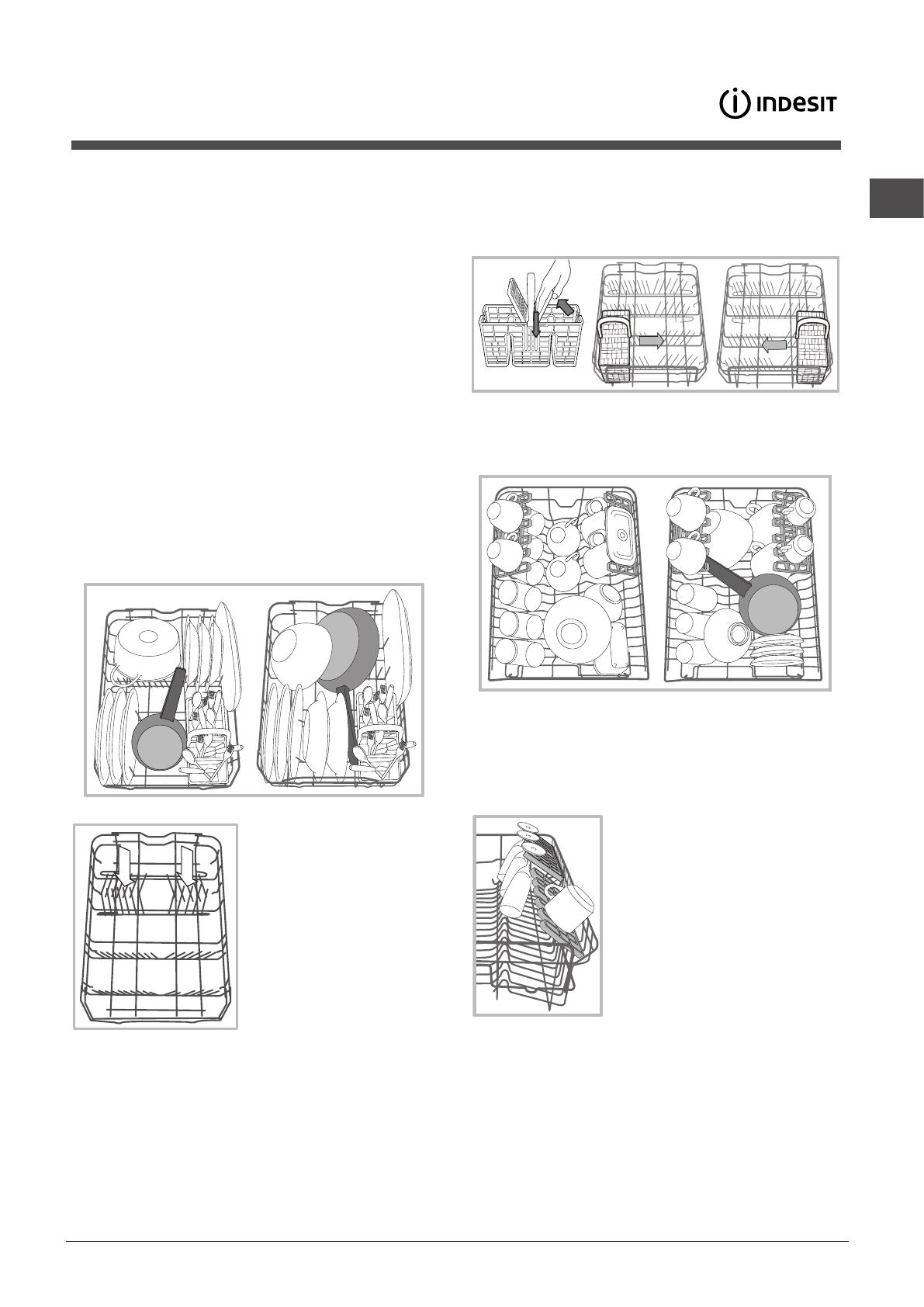
4
follow local legislation so that the
packagings may be reused.
• The European Directive 2012/19/EU
relating to Waste Electrical and Electronic
Equipment (WEEE) states that household
appliances should not be disposed of
using the normal solid urban waste cycle.
Exhausted appliances should be collected
separately in order to optimise the cost of
reusing and recycling the materials inside
the machine, while preventing potential
damage to the atmosphere and public
health. The crossed-out dustbin symbol
shown on all products reminds the owners
of their obligations regarding separated
waste collection.
For further information relating to the correct
disposal of household appliances, owners
may contact the relevant public authority or
the local appliance dealer.
Saving energy and respecting the
environment
Saving water and energy
• Only begin a wash cycle when the
dishwasher is full. While waiting for the
dishwasher to be filled, prevent unpleasant
odours with the Soak cycle
(if available, see
Wash Cycles).
• Select a wash cycle that is suited to the
type of crockery and to the soil level using
the Table of Wash Cycles:
- For dishes with a normal soil level, use
the Eco wash cycle, which guarantees low
energy and water consumption levels.
- If the load is smaller than usual activate
the Half Load option
(see Special wash cycles
and options, if available).
• If your electricity supply contract gives
details of electricity-saving time bands, run
the wash cycles when electricity prices are
lower. The Delayed Start option can help
you organise the wash cycles accordingly
(see Special wash cycles and options, if available).
PL
Zalecenia i środki ostrożności
Niniejsze urządzenie zostało
zaprojektowane i wyprodukowane zgodnie z
międzynarodowymi normami
bezpieczeństwa. Poniższe ostrzeżenia
podane zostały ze względów bezpieczeństwa
i należy je uważnie przeczytać.
Należy zachować niniejszą książeczkę
instrukcji dla przyszłych konsultacji. W
przypadku sprzedaży, odstąpienia lub
przeprowadzki należy dopilnować, aby
została przekazana wraz z urządzeniem
nowemu właścicielowi.
Uważnie przeczytać instrukcję: zawiera
ona ważne informacje dotyczące instalacji,
użytkowania i bezpieczeństwa.
To urządzenie zostało zaprojektowane
do użytku domowego lub podobnych
zastosowań, na przykład:
- w domach kolonijnych;
- do użytku przez klientów w hotelach, motelach
i innych obiektach typu mieszkaniowego;
- w pensjonatach bed and breakfast.
Rozpakować urządzenie i sprawdzić, czy nie
zostało uszkodzone podczas transportu. Jeśli
okazałoby się uszkodzone, nie podłączać go,
lecz skontaktować się ze sprzedawcą.
Bezpieczeństwo ogólne
• Niniejsze urządzenie może być używane
przez dzieci powyżej 8 roku życia oraz
osoby o ograniczonych zdolnościach
fizycznych, zmysłowych i umysłowych
lub nie posiadające jego odpowiedniej
znajomości lub doświadczenia, pod
warunkiem, że znajdują się one pod
ścisłym nadzorem odpowiedzialnej za
nie osoby bądź też otrzymały instrukcje
dotyczące bezpiecznego użytkowania
urządzenia oraz zrozumiały związane z
nim zagrożenia.
• Dzieci nie powinny bawić się urządzeniem.
• Czyszczenie oraz konserwację urządzenia
musi przeprowadzać użytkownik. Nie mogą
być one przeprowadzane przez dzieci bez
nadzoru.
• Urządzenie jest przeznaczone do użytku
nieprofesjonalnego wewnątrz pomieszczeń
mieszkalnych.
• Urządzenie powinno być używane do
mycia naczyń w warunkach domowych
zgodnie z niniejszymi instrukcjami.
• Urządzenia nie należy instalować na
świeżym powietrzu, nawet w miejscu
zadaszonym, gdyż wystawienie go na
działanie deszczu i burz jest bardzo
niebezpieczne.
• Nie dotykać zmywarki, stojąc boso na
podłodze.
• Przy wyjmowaniu wtyczki z gniazdka nie
ciągnąć za kabel, lecz trzymać za wtyczkę.
• Po zakończeniu każdego cyklu i przed
przystąpieniem do czyszczenia i















